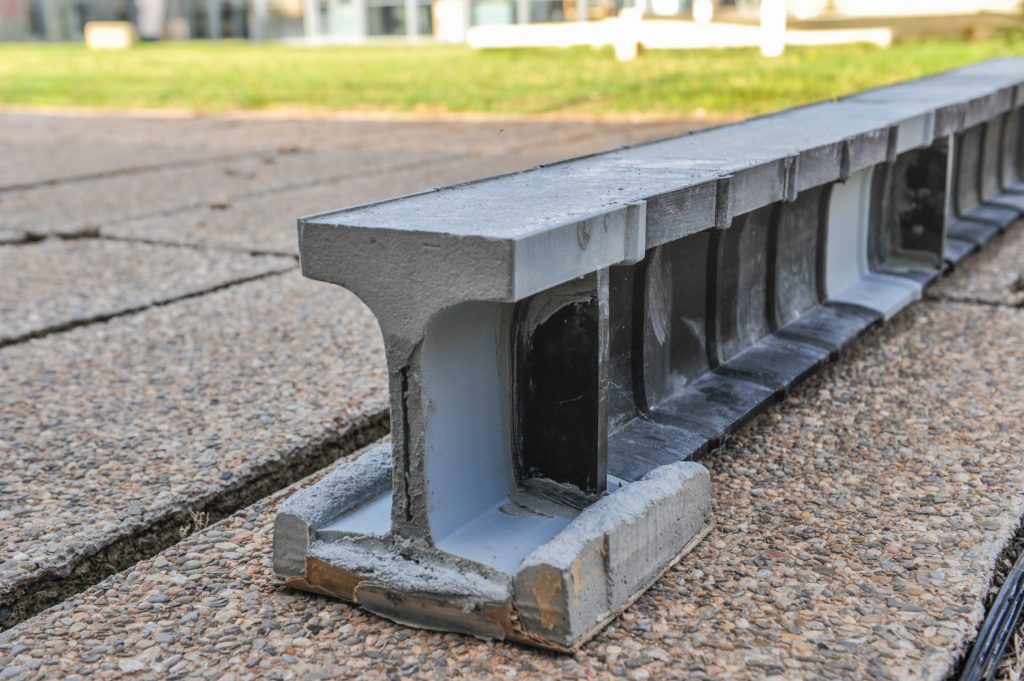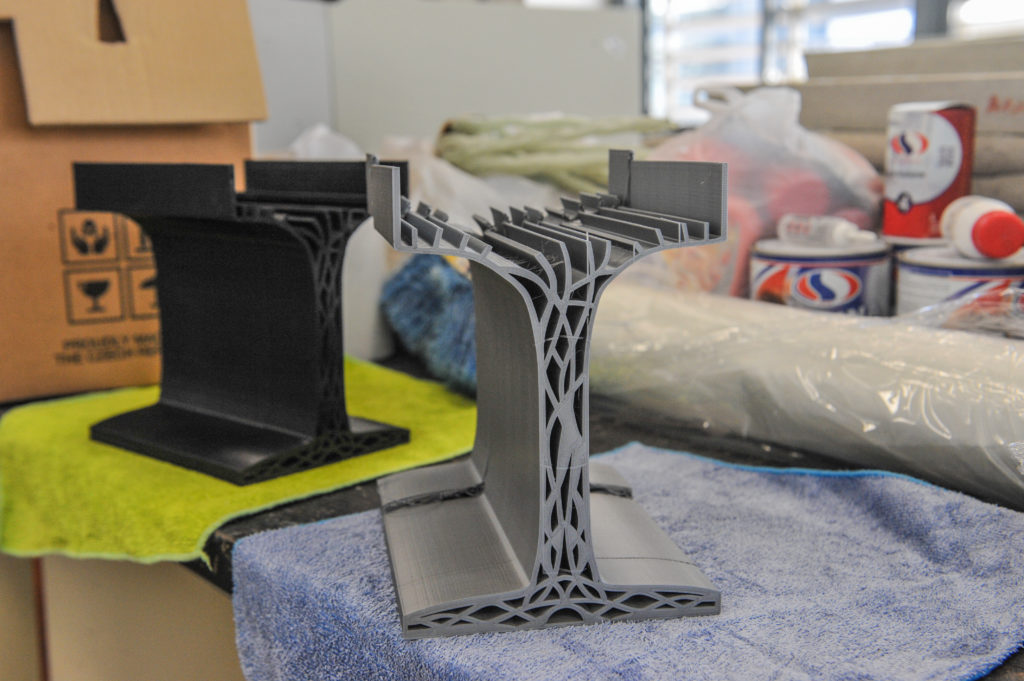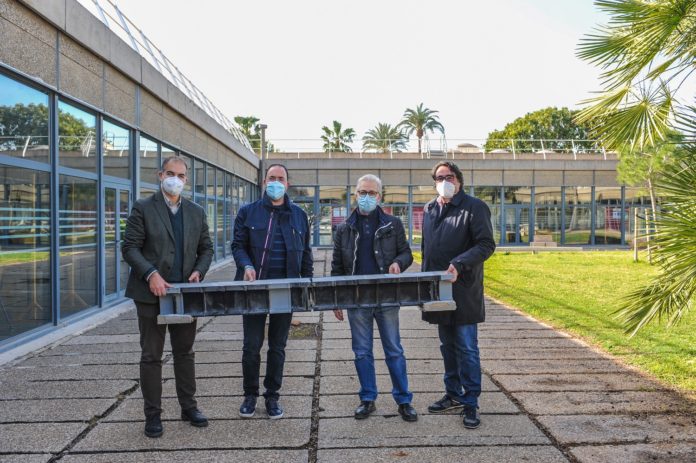It has always made sense to talk about lightweight parts in the automotive, the aerospace or the space industries but talking about lightness when it comes to the construction industry is quite new.
In the building industry, reinforced concrete beams are often used for buildings and bridges. Due to their length and weight, they often require large machinery for both transportation and installation. To address this issue, researchers from Polytechnic University of Valencia have developed a patenting system that uses “Lego-like” segments of 3D-printed plastic that can be pieced together for significant savings on weight and construction time.
According to the experts, the 3D printed beams weigh up to 80% less than concrete or metallic beams, which means that no heavy cranes or lorries are needed to carry and install them.
They save time and money on labour and materials; and they can be printed and assembled in situ, facilitating therefore, their installation anywhere, regardless of how difficult it is to reach. For the experts, the use of recycled plastics as raw material gives a new life to this product and helps move towards more sustainable construction.

Images: Polytechnic University of Valencia 
“Our goal was to propose an alternative to the current reinforced concrete beams. These are made using profiles built for the length of the piece, which requires expensive installation and are hard to transport,” says José Ramón Albiol, lecturer at the Higher Technical School of Construction Engineering (ETSIE) of the Polytechnic University of Valencia. “Following numerous hours of tests and trials, the combination of 3D printing, plastics and concrete provided optimum results. And last October they patented the system.”
Its main novelty resides in the polymeric profile of the beam, comprised by multiple longitudinal segments that can be assembled and concreted where you wish to install the structure. The beam is reinforced with elements that ensure the structure’s rigidity and which have no metallic component. “This prevents corrosion, decreases the weight and simplifies the work time required,” adds Xavier Mas, from the Institute for Heritage Restoration (IRP) of the Polytechnic University of Valencia.
The system also removes the need for costly formwork and bending, which makes it possible to work without having to stop traffic at the infrastructure that is being worked on. “Furthermore, this solution makes it possible to decrease the required labour and auxiliary means, which entails cost and time savings,” adds José Luis Bonet, from the University Institute of Concrete Science and Technology (ICITECH) of the Polytechnic University of Valencia.
A “human” structure
Another novelty of the system is the internal structure of the polymeric profiles. “It is an alveolar structure, which makes it possible to decrease the amount of plastic used – and therefore its weight – while maintaining structural rigidity,” says Albiol.
This alveolar structure was inspired by human bones around the epiphysis, where there is a layer of cancellous bone with a trabecular disposition – the alveolar structure – and a thicker external layer of compact bone. “This is what we have transferred to these revolutionary beams, specifically to their profiles. It is a very intelligent natural system and its reproduction in these beams awards them, with the low structural weight, very high mechanical capabilities,” adds José Ramón Albiol.
Customised pieces anywhere
3D printing makes it possible to manufacture customised pieces very near the area of implementation, which also simplifies transportation, saves costs and facilitates customisation. “To be able to customise the beams in situ makes it possible to adapt the characteristics of each of them to the structural needs at each point of construction. The possibility to recycle polymeric materials to produce the beams significantly decreases their carbon footprint,” concludes Miguel Sánchez, from the Department of Systems and Computer Science (DISCA) of the UPV.
Remember, you can post job opportunities in the AM Industry on 3D ADEPT Media free of charge or look for a job via our job board. Make sure to follow us on our social networks and subscribe to our weekly newsletter : Facebook, Twitter, LinkedIn & Instagram ! If you want to be featured in the next issue of our digital magazine or if you hear a story that needs to be heard, make sure to send it to contact@3dadept.com






